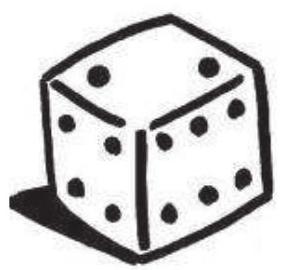Problem:
A fair six-sided die is rolled twice. What is the probability that the first number that comes up is greater than or equal to the second number?
Answer Choices:
A. 61
B. 125
C. 21
D. 127
E. 65
Solution:
Make a table of 36 possible equally-likely outcomes. The first number is greater than or equal to the second in the 21 cases indicated by the asterisks, so the probability is 3621=127.
12345611,1∗2,1∗3,1∗4,1∗5,1∗6,1∗21,22,2∗3,2∗4,2∗5,2∗6,2∗31,32,33,3∗4,3∗5,3∗6,3∗41,42,43,44,4∗5,4∗6,4∗51,52,53,54,55,5∗6,5∗61,62,63,64,65,66,6∗
OR
In 6 of the 36 possible outcomes the two numbers are equal. The first number is greater than the second in half of the remaining 30 outcomes, so the first number is greater than or equal to the second in 6+15=21 outcomes. The probability is 3621=127.
Answer: D.
The problems on this page are the property of the MAA's American Mathematics Competitions
